SLP Method - How to save lost chess positions?
Save losing positions in chess, trick your opponent and become a tough-to-beat player by following these 11 strategies GM Avetik shares in this article.
Save losing positions in chess, trick your opponent and become a tough-to-beat player by following these 11 strategies GM Avetik shares in this article.

It doesn’t matter if you’re a progressive beginner or a world champion.
From time to time you’re going to be in lost positions… And if you resign every time – you’ll leave lots of rating points on the table.
If you don’t resign, but you lose your mood and play poorly – you’ll leave lots of rating points on the table too.
And if you don’t resign, you keep the mood and continue playing… If you don’t know strategies on how to save lost positions… You’ll still leave lots of rating points…on the table.
Throughout my career, since I was a kid to a 2600+ GM, I've encountered countless lost positions. And I was often called a "lucky" player – lucky Avetik, lucky Grigoryan.
Can you guess why? Because I saved many lost positions!
What many didn't know though is that I had specific strategies, not luck, to help me save hopeless games.
Combining all my knowledge in this area with the insights of fellow Grandmasters, as well as extensive research done by our team of five masters, we launched the 'The Art of Saving Lost Positions' course.

SLP Method - The Art of Saving Lost Positions
And I wrote this article, summarizing many of the important concepts from the course. Here you’ll learn:
When I was interviewing one of our students Avinash, who got from 1900 Fide rating to 2400 and made an IM norm in 1 year, I had asked what was the most important skill he learned in ChessMood.
He said it was learning SLP skills! In his words,
“I got the fighting spirit which I didn't have earlier. This helped me save a lot of games during tournaments.”
The point of sharing this is to let you know that SLP is a learnable skill, one that can dramatically increase your rating.
It’s not a personality trait. And you don’t need to pray 10,000 hours for goddess Caissa to bless you with this skill. Okay maybe that helps😀
But what you really need is specific and actionable strategies you can implement when you’re losing.
Let’s start by diving into them.
To make it easier to understand all these SLP strategies, I’ve divided it into 3 blocks.
In the 1st block, you’ll learn the fundamentals of playing in losing positions.
In the 2nd, you’ll see how to be creative and make some dirty, but ethical tricks.
And in the 3rd, you’ll understand how to use psychological factors to gain the upper hand.
We’ll begin from the 1st block, the fundamentals.
This is the main rule you need to remember when in the SLP mode – Complicate the position!
If you’re in a losing and the game continues smoothly, with you and your opponent making normal moves, you will eventually lose.
Your only chance to save a lost position is if your opponent makes a mistake. You cannot simply sit and wait for your opponent to blunder. Instead, you need to help them!
And in which kind of positions will they make a mistake? In complicated ones!
The next few strategies you’re going to learn are based on this.
The more pieces on the board – the more chance for the opponent to make a mistake.
Consider the 2 positions below.

In both positions, Black has an extra piece. But which one will be harder to win for them?
Certainly the 1st one right? There are still lots of pieces on the board and room to make mistakes.
Also, keeping more pieces means having the chance to use them to target the opponent’s King, as you’ll soon see.
Exception
While we generally avoid exchanging pieces in a lost position, there's one exception. It’s when we find ourselves in a lost endgame.
In this scenario, we try to exchange pawns. Yes, pawns. Not pieces. Why so?
Because, many endgames without pawns are drawn, even if one side has an extra piece (for example K+B or K+N vs King). So by exchanging the pawns, you might save the game.
Below is an example:
Initially, I was going to call this “Antichess.” But it sounded too ugly, so I made adjustments 🙂
However, the idea behind ‘Antichess’ remains. In a losing position, the ‘normal rules’ don’t apply.
Instead, you often have to do the opposite and forget some common chess principles. So make adjustments to your game accordingly.
Let me show you an example.
By now you know that in lost positions we can’t play normal chess and often have to make many concessions. What should be the plan then?
To target the opponent’s King!
This strategy has 3 main advantages:
So, try to organize an attack and go after the enemy King. Below is an example. It’s my most beautiful save!
How would you feel if you were in a 100,000 debt?
If you said, I wouldn’t care, I’m glad for your financial situation and your confidence 😅
But if you said, I wouldn’t feel well, I hear you.
Now another question.
If you had 3 million in debt, and at some point, it becomes 3.1 million. Would you feel much difference? Most probably no, right?
How is this all related to chess? Let me explain 🙂
If we sacrifice a pawn, often we need to think before giving it.
If we sacrifice a piece, often we think twice.
If Rook, we think even more.
But if you’re a Queen down, do you think twice for sacrificing a pawn?
Not really, right?
What’s the difference of being Queen down and Queen + pawn down?
Almost the same!
So, when we’re in the SLP, this is one of the fun parts!

We can sacrifice left and right without thinking twice, and without precise calculation.
Instead of asking the question “does our sacrifice work” we should ask another question “does it complicate the position”?
If the answer is yes – Pabam!!!
We sacrifice and start playing the piano on the opponent’s nervous system.
Below is an example.
If you have 1 task to do, you most probably will not forget about it.
But what if you have 10? 🙂
In the same way, if the opponent has to deal with just 1 active piece, there’s less chance they’ll make a mistake, than if they were dealing with 5 active pieces.
So, we’ll need to activate our pieces and make them feel happy.
The happier our pieces, the more headache the opponent will have.
And if there’s a chance, in which direction should we activate our pieces?
Yes! Towards the opponent’s king.
Let me show you an example.
In SLP mode, look for the PRACTICAL best moves!
If you practice your converting advantage skills, you’ll convert more games against the engine than against an experienced Grandmaster.
Here’s why:
Engines are hard-coded to choose the objective best move.
Whereas Grandmasters choose PRACTICAL best moves that give the opponent more chances to wrong, even if objectively it isn’t the best!
Give your opponent options to go wrong.
In many of the examples above, the side playing in SLP mode chose moves that engine wouldn’t approve. But they were the best practical moves!
I’ll show you an example to make the difference crystal clear.
All the strategies you learned above are about causing headaches for the opponent and complicating the position.
Next up, we move on to the 2nd block where you’ll see strategies to…
Here I’m going to be a bad guy and teach you some tricks. They’re all legal and ethical though 😅
Usually, playing trappy chess isn’t a good idea. But in the lost positions, it’s an absolute must-have weapon.
Often creating a trap will not be objectively the best move. But as you know from the previous strategy, we only care about making PRACTICAL best moves!
If you see a nice trap, and there is even a 10% chance that the opponent can fall in, you should think about it. And if you don’t damage your position too much – just go for it!
The position below is a great example of what a cunning trap looks like.
Most of the traps with stalemate will happen in the endgames. But sometimes that can happen even in the middlegame!
And there’s one Armenian Grandmaster who has a speciality in this. He’s also known famous for his resisting character.
Meet my friend and teammate at ChessMood, GM Robert Hovhannisyan.
It’s very tough to beat him. He fights till his last bullet. I don’t mean bullet chess, but bullet of the gun 😅
He saves lots of lost positions. I’ll show you one of his unbelievable save and you’ll know what I mean 🙂
How the heck does Robert come up with such ideas? 🙂
In the course, I’ve gone into more detail about this. Here, I’ll distill it in short – Robert has a very bright fantasy, a sharp tactical vision and most importantly – he fights till the end!
You can find more example of his incredible save in the article – “Stalemate – Your Faithful Friend in Lost Positions” on our Blog.
Now let’s go to the last strategy of the 2nd Block, and I’ll teach you a few more tricks to save lost positions by using our creativity.
Time to put on your shameless masks🙂
I’m going to introduce you to the “last chance” concept and how you can use “dirty” tricks in super lost positions when you’re about to resign.
They’re dirty but ethical. Every top player uses them.
And 95 to 99% of the time, they don’t work.
But even if we save 1-5% of the positions when we were about to resign – it’s lots of rating points saved in the long run.
Let me show you an example of what I mean.
You’re now aware of the basics of setting traps. You can learn more in the course where I’ve gone into more depth, revealing in detail a 5-step process for creating traps, when to set them up, etc.
Next, we’ll move on to our 3rd block which is all about using psychology to gain an advantage.
There are 2 types of mental dynamics when one side is winning.
The 1st type I call – Joyful vs Upset
Here the side who’s winning is excited and happy. She has a big advantage and is about to win.
The other side is sad. She’s lost, disappointed and upset about the position.
In this dynamic, the winning side not only has a big advantage over the board but also a psychological one. This dynamic happens in most cases.
But when you’re lost, you’ll not be here. Being upset isn’t for us.
Instead, you’ll be in the 2nd type. I call it – Nervous vs Joyful.
Yeah, now the losing side is the joyful one. How’s that? 🙂
See, you’re losing right? You’re at rock bottom. What are you holding onto? What do you have to lose?
Nothing. Absolutely nothing!

So how do you get into this joyful state?
Here’s a 5-step method you can use. It’s similar to the one I shared in the BlunderProof course.
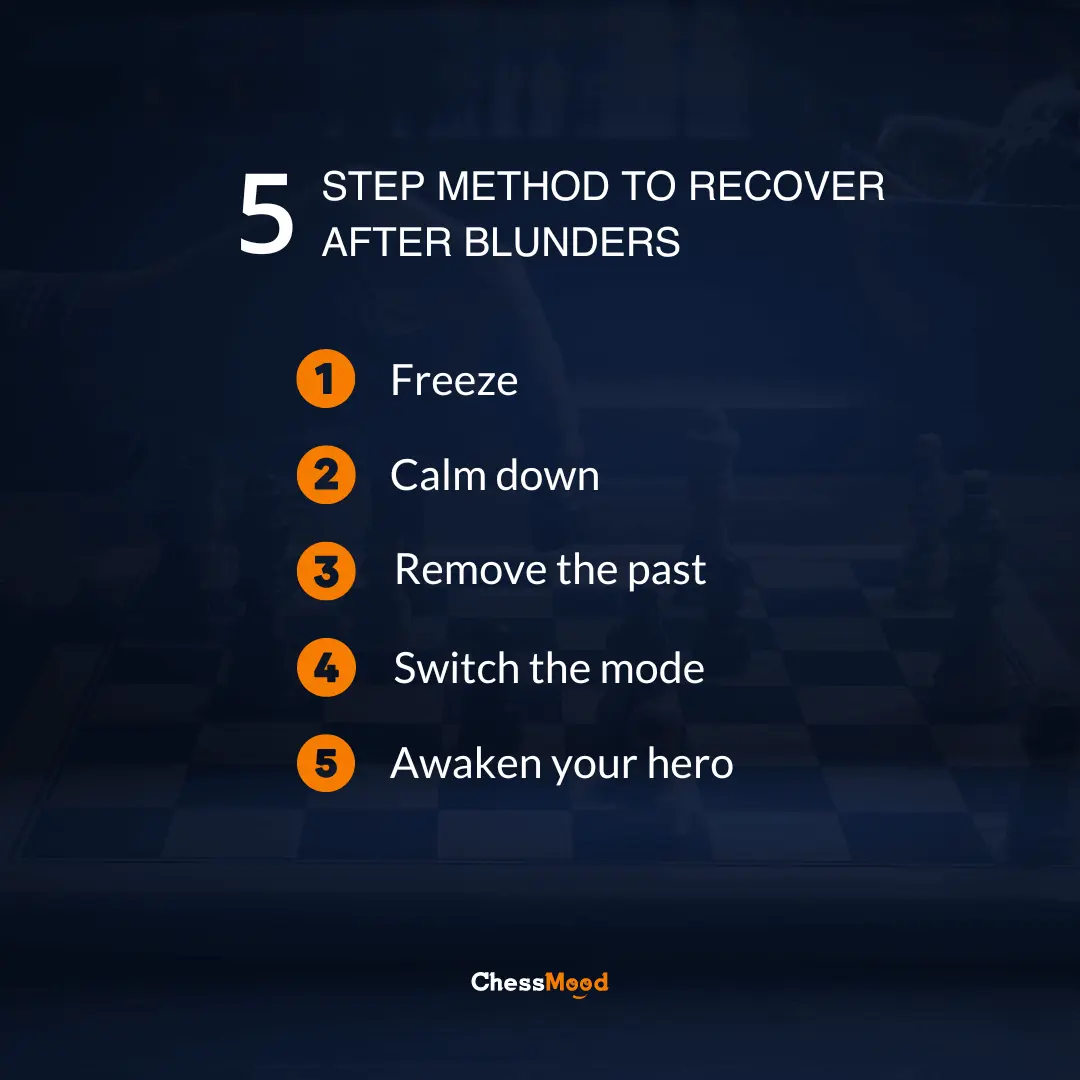
I’ve written a detailed article on how to handle blunders where you can find more details.
***
My friends, you know the basics of fighting in lost positions. To make it easier for you to remember the above strategies, I’m attaching this infographic from our course.
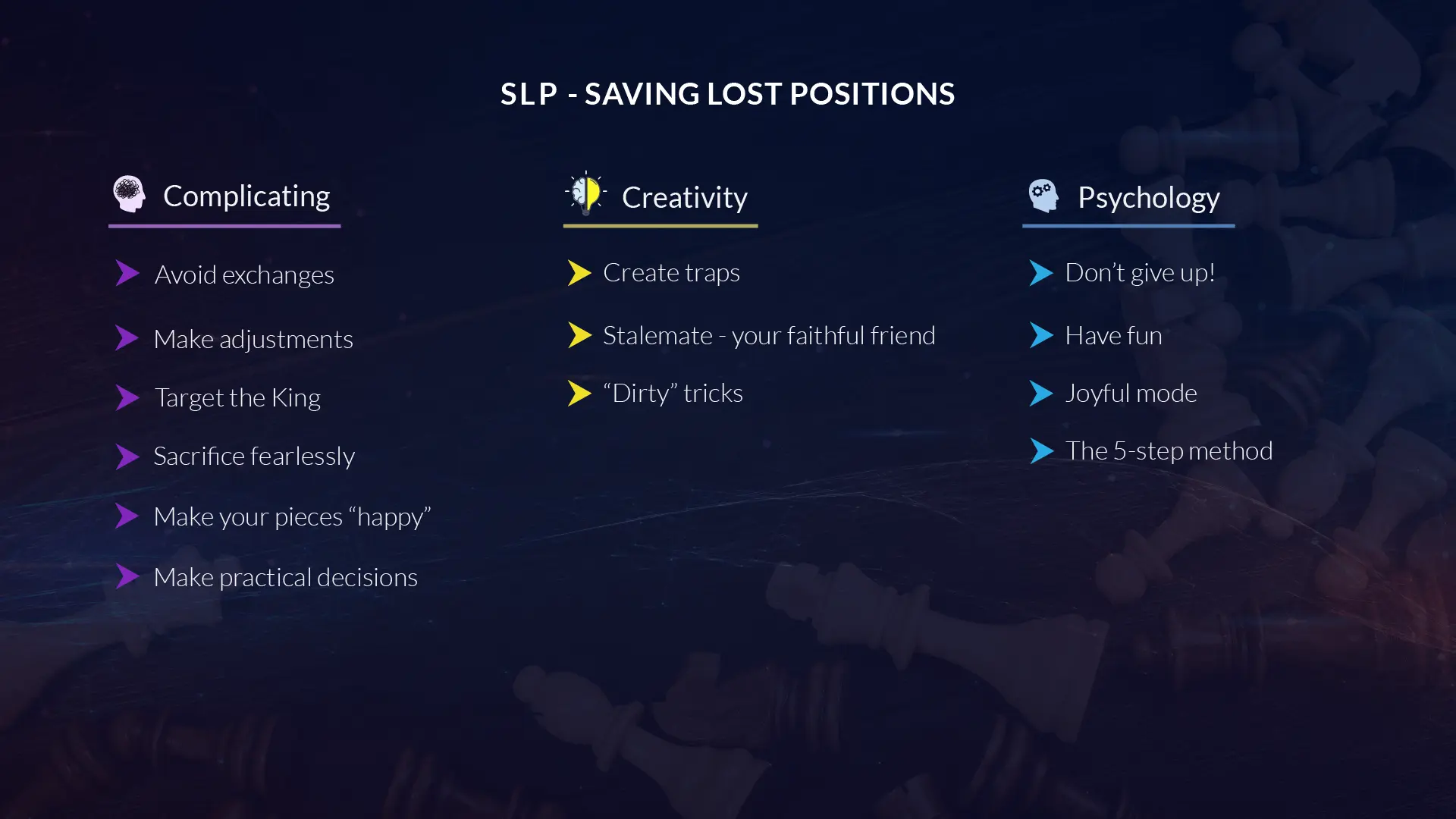
You can download, print and keep a copy of this so that it seeps into your unconscious mind each time you train your SLP skills.
I’ll soon share training techniques to get better at this. But before that let I’ll answer a question you might have.
If you’re executing your SLP tactics, does it mean you should never, ever give up and play till mate?
Or in other words…
Take a look at the position below and imagine you’re playing as White.
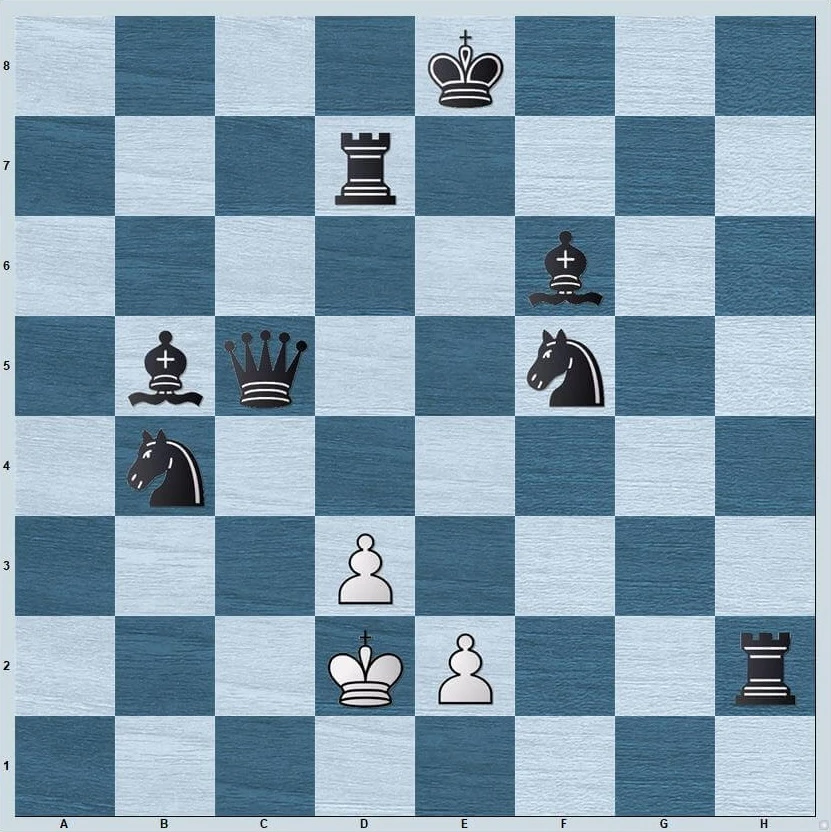
Your opponent has Queen, Rook and other pieces against your naked king. Should you fight?
“This is Spartaaaaa!” attitude will not help here, unless you’re a beginner and sudden stalemates are often in your games.
So is there a boundary when SLP doesn’t make sense and we should accept defeat?
There is. You’ll know when to resign by asking the golden question – “Would I win the same position with reversed colors against a strong computer, while having very little time on my clock?”
If the answer is not “100% yes”, it means there’s a room for mistakes. Forget about resigning and continue fighting in SLP mode.
Resign only when you’re 100% sure that you would win the position with reversed color against anyone, including chess engine or the world champion.
As I’ve shared in the article, How to get better at chess, the key to improvement is the ‘Study-Practice-Fix’ formula!
So far, you’ve studied many techniques of SLP.
Now to take your skills further, you need to practice and fix the mistakes. For that, I’ve 4 training methods for you.
Create a new account on lichess/chess.com. This will be your SLP account, and where you’ll only play the SLP gambit.
What’s that? You play 1.e4 and 2.Ba6 🙂
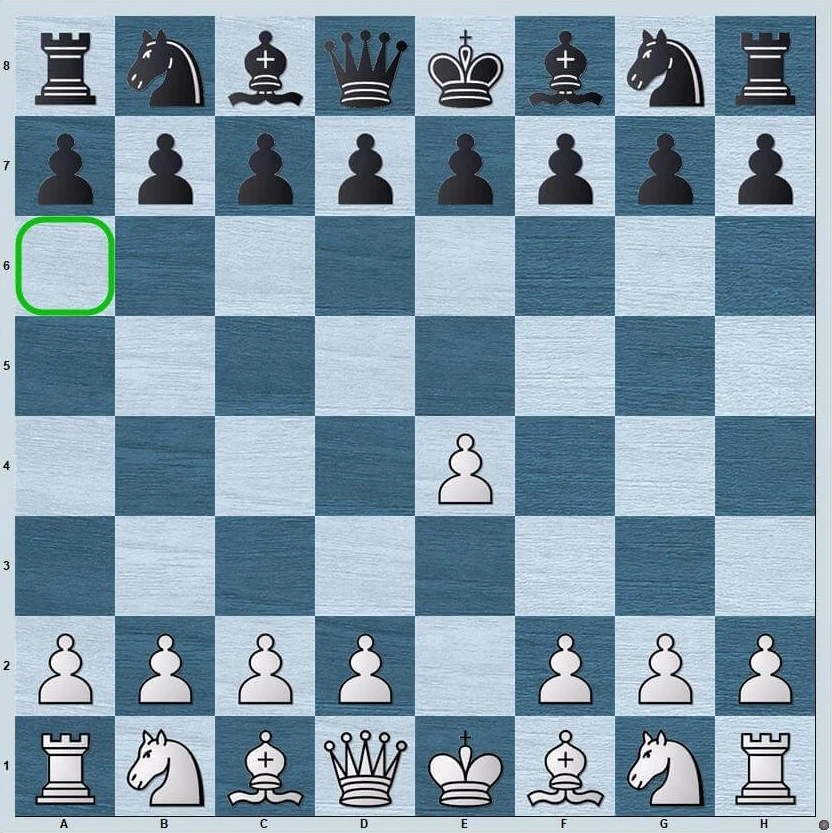
Give up a piece, get a losing position and play.
Or 1.d4 with 2.Bh6. Up to you.
The same thing for Black – 2…Ba3 or 2…Bh3.
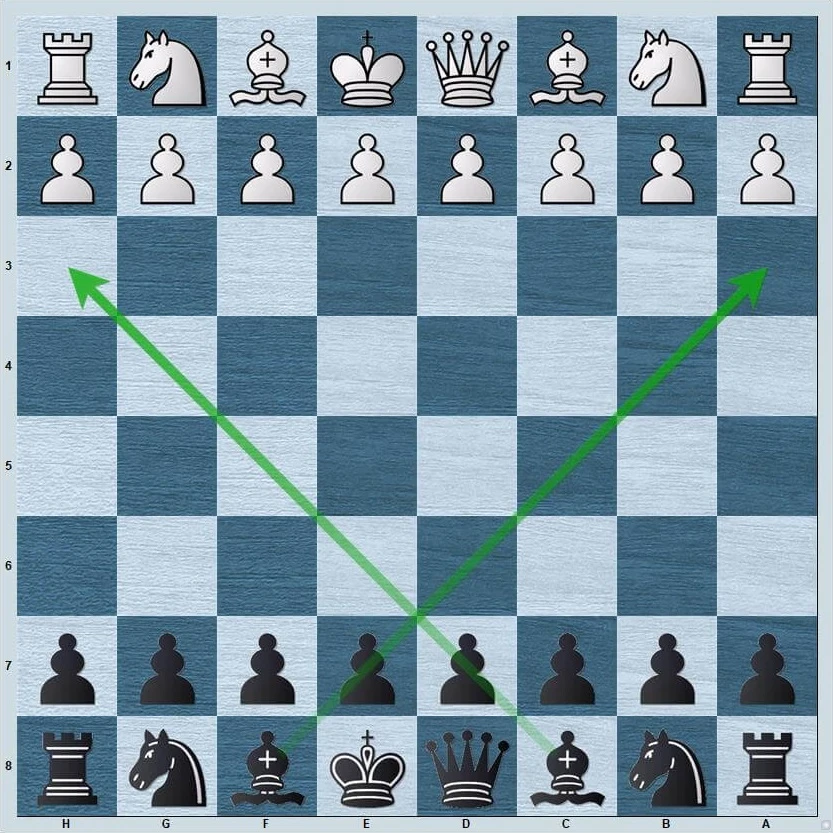
You’ll get to practice all the strategies and tricks you’ve learned from this article.
One thing – Because you’ll be playing only lost positions, your SLP account’s rating will be a few hundred points lower than your normal.
If you get somewhere between 200-500 point difference, that’s great!
Personally, my online rating on chess.com is over 2,900. And my SLP account is 2,400 🙂
Also on your SLP account, you can experiment by giving up different kinds of material from the beginning.
Maybe a knight instead of a bishop, or a piece for a pawn, or just donate 2 pawns in the opening and then continue playing 🙂 It’ll be fun!
Another good way to train your SLP skills, is by playing with a training partner.
If you don’t have one yet, you can find them on our chess forum, or on Discord channel.
Together with your partner, you play the same SLP gambit. You’ll train your SLP skills, and the opponent their WWP skills.
Later change places, with you playing from WWP side, and your partner practicing their SLP skills. These 2 training will help you to become a very tough guy to beat.
At ChessMood, we always believe in not just teaching you theory but also showing in practice how to implement what you learn.
I’ve played lots of SLP games during our live training, where I would donate a piece in the opening, switch to SLP mode, and then show in practice how to save lost games.
To see these live streams:

There will be recordings of many SLP training.
You can watch them as they’ll help you to understand how to think and make decisions when you’re in a lost position in a real game.
In our SLP course, we’ve added quizzes, in between the sections and at the end.
This means after every SLP strategy you learn, you’ll find specific puzzles based on that to solve.
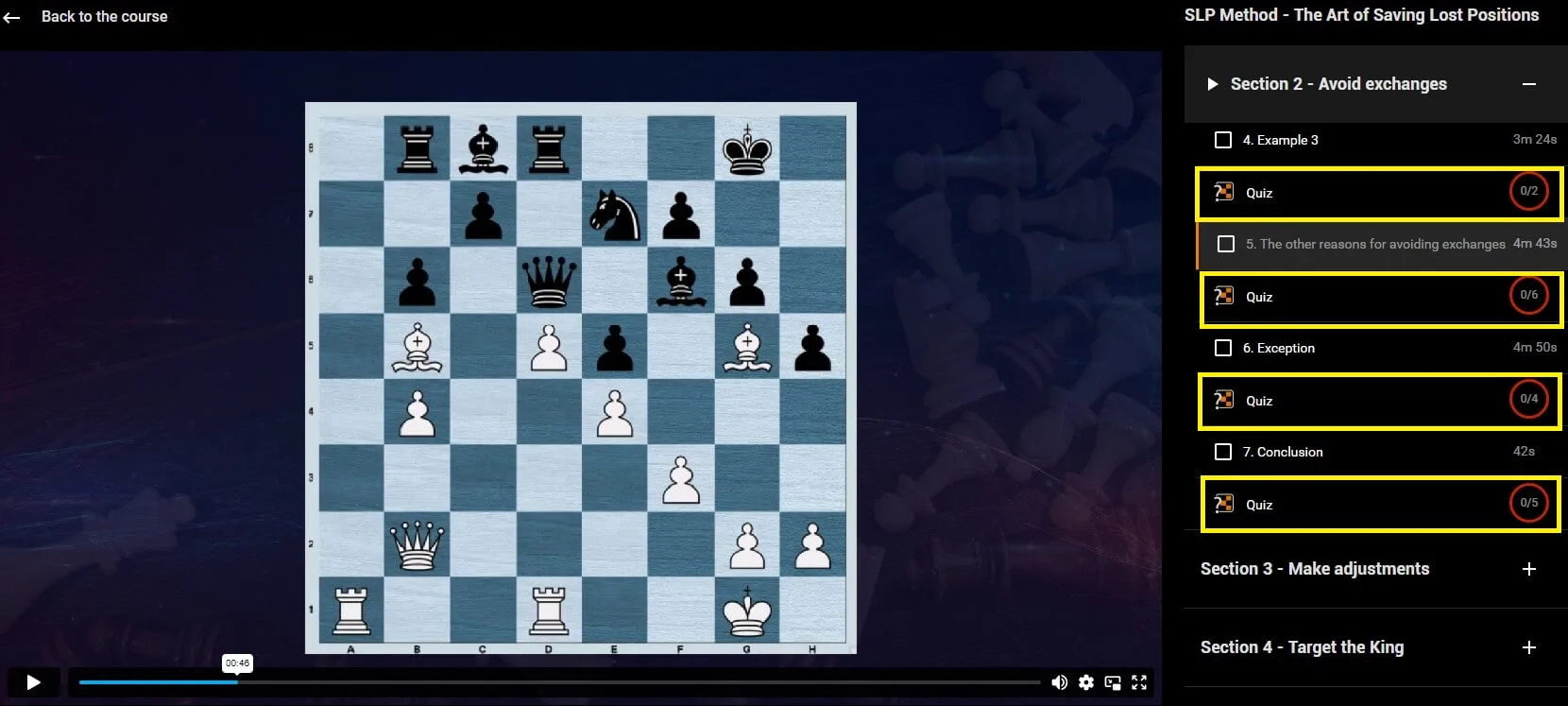
Plus, at the end you get to solve mixed puzzles based on random SLP themes.
This way, you’ll not only you’ll practice whatever you’re learning but can also come back to these puzzles from time-to-time to refresh your knowledge.
As you follow the above skills, it will bring a noticeable change to your game.
Before wrapping up, I’ll share one important skill that will help you tremendously in difficult positions.
You can save some games by not resigning and just continuing.
But most often to save games, there should be something that wasn’t super obvious which is why the opponent missed it. Those not super obvious things will be tactics most of the time!
So the better your tactical vision, the more chance you’ll have to trick the opponents somewhere and create situations where they might go wrong.
So please, improve your chess tactics as it will give a big boost your SLP skills.
Dear friends, you’ve now learned the basics of SLP, the golden question you should ask before resigning and how to train these skills.
If you want to study this topic deeper, watch the course we’ve prepared for you on this topic.
We spent a year talking to experts, combining the knowledge of our Grandmasters, carefully selecting the positions and structuring everything in a way that helps you get the most value out of it.
You’ll find lots of examples related to what you learned above, more nuances and advanced techniques that will dramatically improve your SLP skills.

The Art of Saving Lost Positions
You don’t need to buy it. With the ChessMood Membership, you have full access to all of our 400+ hours of courses, including this one!
Now that you know the strategies and will start saving lots of losing positions, be ready to be called lucky.
Only you and me will know, you’ve spent time learning this skill.
P.S. Do you have a memorable game where you saved a lost position? What SLP strategy did you use? Please share it in the forum.
Related Reads
How to stop blunders in chess?
Blundered? Bounce back with this 5-step Grandmaster method
The golden question you should ask before resigning
Originally published Jun 13, 2023

